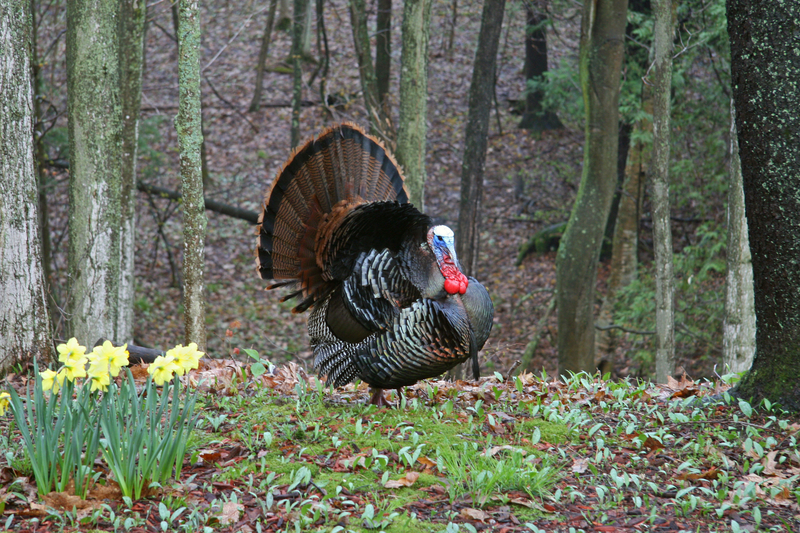Here are just a couple of ways to make your next turkey season one for the record books. We think after reading these you'll be excited to get out into the woods!
Kill a Western Bird on Your Own
Every few seasons, an eastern hunter might strike a longbeard that runs a quarter mile to his gun barrel. But if that doesn’t happen twice in a weeklong western hunt, something’s wrong. Western turkeys are, in a word, dumber. And they’re often packed shoulder to shoulder on public ground. That got your attention? O.K., here are the three keys to killing one.
1. Just Scout: Out West, you’re either into birds or you’re out. A hundred turkeys will cram into a little cottonwood creekbottom, while miles of identical habitat will be totally birdless. So, plan your D.I.Y. trip with two extra days on the front end for nothing but scouting. To find toms, glassing is the way to go on the prairie, but in timbered terrain, you need to listen for gobbles at dark; western species usually gobble more consistently at fly-up time than Easterns.
2. Call Long Distance: On a South Dakota hunt, I’d just spooked one Merriam’s gobbler but heard another faraway bird. Frustrated, I started in his direction but then decided to check him first with a few loud yelps. He cut me off, and though he was still 300 yards away, he’d closed half the distance. Ten minutes later, he was flopping at my feet. If a Rio or Merriam’s turkey answers you, don’t dally before setting up. These are big-country birds, and they’ll commit to a call from amazingly long distances. Don’t plop instantly into a bad setup, of course, but know that if a western turkey is close enough to answer, he’s close enough to work.
3. Stay Put: If I know an Eastern tom is henned up, I’ll often leave him alone and come back later. But finding turkeys is the heart of the challenge out West. Three miles of prairie may stand between you and the next flock. Stick with the birds you’re on, and if all else fails, ambush them as they return to roost in the evening.
Take a Double With a Buddy
At the bar and in the woods, randy young males showing off for females and wanting to fight everyone else tend to make poor decisions. And so, when 2-year-old gobblers gang up in early spring and go on the prowl, you have a golden opportunity to kill a double. Hit the woods with your buddy—or your boss—and use these two tips.
Tip 1: Set Up for Satellites These subordinate toms are roamers. They’ll check every food plot, hardwood ridge, and hayfield in their home turf for hens, and they’ll do plenty of gobbling along the way. Hit likely fields and open ridges, call aggressively, and wait for that string of two or three eager, overlapping gobbles. Set up about 5 yards apart, so each of you has enough room to safely swing a gun, while being close enough to communicate. Stake a hen decoy 25 yards out to grab the attention of the toms and position them perfectly.
Tip 2: Plan the Shots Don’t be shy on the call. Pull these gobblers into the open where they can see your decoy, and odds are they’ll strut right into range. Designate one of you as the first shooter. If it’s you, wait until at least two toms are in easy range and take out the one on your side. (Don’t try the old “1, 2, 3” count; something always goes wrong.) If you’re the second shooter, be prepared to act fast, but don’t rush. Often as not, the turkeys will scatter a bit at the shot but then stand around—and even flog the downed bird—afterward. As long as both of you keep still, there’s usually plenty of time to drop the second bird.
What do you think of these turkey hunting tips? Have you done either of them? What are your favorite turkey hunting strategies? Share your thoughts in the comment section below!
Article Source: Field & Stream
